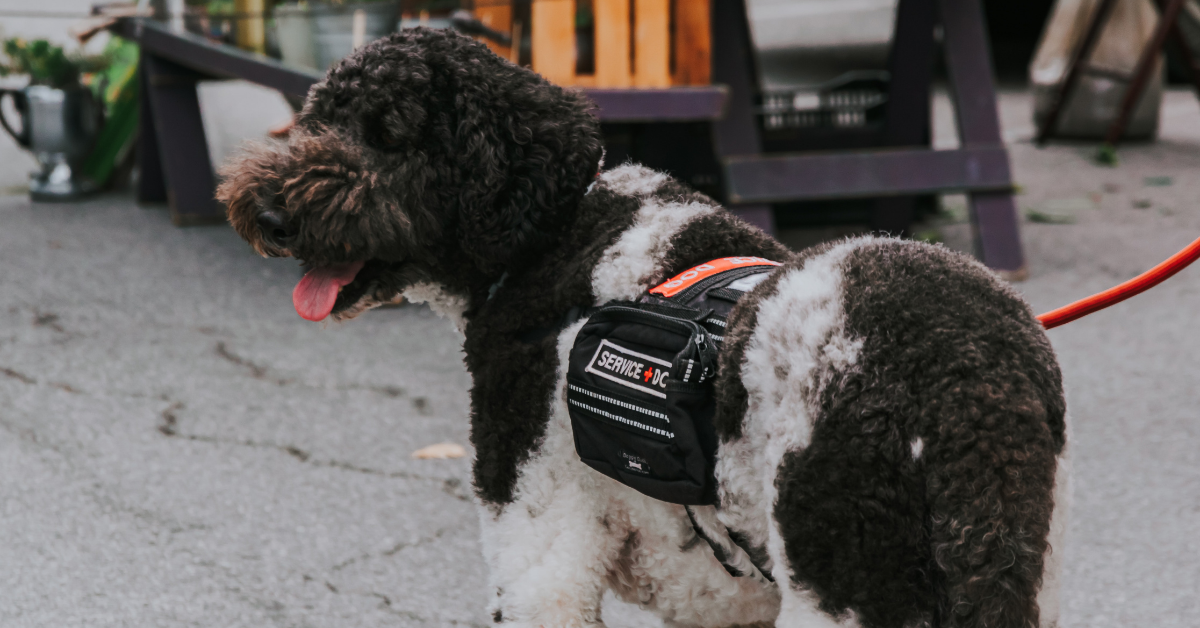
Service Dog Etiquette
Since passage of the American’s with Disabilities Act (or, ADA http://www.ada.gov/) in the 1990s, the US has witnessed an explosion of the number of disabled persons active in American society. Because of certain provisions in the Act and subsequent revisions, people with many different types of disabilities are now using “service” or, assistance dogs to help them with many daily activities. In this article, I hope to clear up the confusion within the public on the laws regulating access for disabled people, service dogs and dogs “in-training” to be service dogs. As well as how the public should and should not act towards these very important working animals.
Under the ADA, all public buildings and private businesses that “serve the public” (shops, restaurants, hotels, offices and any other place where the public is welcome) must provide access to persons with disabilities. This means, it is illegal for any establishment that invites the public to prohibit or deny access to disabled people and their service animals just as they must make reasonable accommodation for wheelchairs, crutches and canes. Beyond the ADA, which is federal law, many states have stiff penalties for disturbing, harassing or hindering a service animal.
“Please don’t pet me, I’m working” – how to spot a service dog
It is difficult sometimes, especially on the street, to know if a dog is a service dog, or in training to become a service dog. A service dog can be any breed, any size and male or female. Many service dogs wear special harnesses, backpacks or other emblems that mark them as a service dog or as in training. Some even say, “Please don’t pet me” or “service dog” on them. These are usually easy to spot. Another indicator can be the person with the dog: are they using a wheelchair, crutches or cane; sometimes the visually impaired wear glasses inside or at night. There are other situations where it can be difficult to determine if a dog is a service dog. Remember that service dogs are the only animals allowed in certain places such as markets, restaurants, shopping malls and public transportation. If you have any doubt if a dog is a service dog or not, it’s best to decide that it is and to leave it alone.
What to do around a disabled service dog
Legally, service dogs are medical equipment just like wheelchairs, crutches and oxygen tanks are. This means, their sole purpose for being where they are is to assist the disabled handler. Unlike other kinds of medical equipment, service dogs are alive and attentive, warm, furry, sweet and in most cases, completely adorable. Still, whenever they are out in public, they are working and should be allowed to do their jobs.
One of the most common places to encounter a service dog is at restaurants. Most service dogs are trained to be as unobtrusive as possible and will often lie very still under a table or beside the handler’s chair. It’s possible to be surprised by the presence of a service dog in a public place and as with most situations, it’s best to ignore the dog completely if possible. The dog will probably ignore you also, unless told otherwise by the handler. Don’t worry about stepping on the dog or startling it with loud exclamations. A well-trained, experienced service dog is quite accustomed to people making loud noises and sudden movements. Just step over, around or past them if you can. The dog will probably not move at all unless stepped on, which happens occasionally and usually hurts the person who did the stepping more than the dog.
It’s common to run into service dogs in supermarkets and shops. Dogs trained to help people in wheelchairs are expert at moving their handlers down aisles, through crowds and around stacks of merchandise. If you encounter a service dog in a supermarket or other store, it’s best to give them as much room as possible but, there’s no need to avoid just ignore. If you intercept a blind guide dog in a crowd, it’s polite to say something and let the blind person know you are there.
In every situation, it’s always best to treat the service dog as you would the person’s wheelchair, white cane or obvious limp and ignore it, addressing only the handler not the dog. If you find yourself unable to resist approaching the dog, approach the handler first. Ask politely if you can pat the dog, but don’t be offended if the answer is “no”. Depending upon the person’s disability and their need for the dog’s attention, some disabled people enjoy being asked questions about their dog and letting them interact with people. If you ever get the opportunity to interact with these remarkable animals, cherish it. Remember the Golden Rule and be polite to both the dog and the disabled handler.
What NOT to do around a disabled service animal
Do not ever call, whistle at, touch, offer or throw food to, snap at, click or walk up to a service dog without speaking to the owner first. There is no need to be afraid, avoid eye contact with or not look at a service dog. Except for staff at restaurants, hotels and on buses etc, no one needs to be concerned to make extra room for a service dog. As said before, they become expert at fitting themselves and their handlers in some remarkably tight spaces.
While it is becoming more common all over, it can still be unusual and unexpected to see a service dog out in public. On behalf of all disabled people who are fortunate enough to have these wonderful animals in our lives, thank you for your respect and consideration. To read more about the different types of assistance dogs or to see if you qualify for one, visit the Guide Dog Foundation (http://www.guidedog.org/), Canine Companions for Independence (www.cci.org), Dogs for the Deaf (http://www.dogsforthedeaf.org/).






